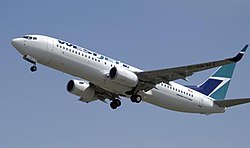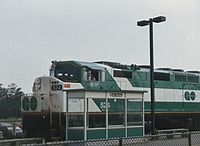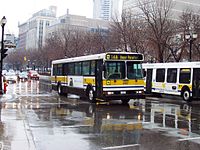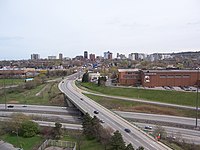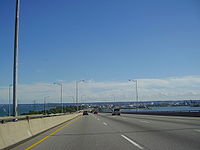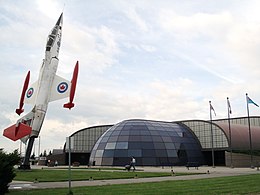Transportation in Hamilton, Ontario
A report by Hemson Consulting[2] says the city will need greenfields the size of the Royal Botanical Gardens on which to locate businesses that will generate an estimated 59,000 jobs by 2031.
[3] Canadian National Railways (CN) serves Hamilton for lifting and setting off traffic for the Rail America (Southern Ontario Railway Shortline), but as heavy industry declined and the preferred mode of transportation changed to road, the number of branch lines and feeder tracks has declined dramatically.
In the late 1990s, GO Transit operations were consolidated at the refurbished Art Deco building on Hunter Street which formerly served the Toronto, Hamilton and Buffalo service.
radiating from Downtown Toronto to Hamilton and Guelph in the west; Orangeville, Barrie, and Beaverton to the north; and Port Perry, Oshawa, and Newcastle in the east.
The name is a legacy of the days when the majority of public transit vehicles were streetcars; the present-day Hamilton Street Railway is in fact built around bus services.
The following controlled access highways and expressways serve Hamilton, Ontario: All of the old city of Hamilton is on a broken great grid pattern, with major north-south streets spaced approximately one half-mile apart and major east-west streets generally spaced six tenths of a mile apart - thus enclosing 160 acre concessions.
They are usually one-way streets in opposite directions, so they are best conceptualized as a single very wide boulevard and are envied by other Ontario cities for their usually efficient flow of traffic.
22-point inspections (including the deck, hand railings, expansion joints, approaches and substructure) are conducted every two years by engineering firms.
This project is also in line with Hamilton’s recently adopted Transportation Master Plan which emphasizes enhanced cycling and walking facilities and an efficient road network to support economic development.
